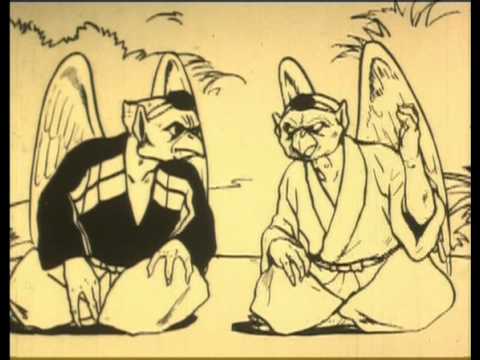
Japanese animation, AKA anime, may well be full of large-eyed maidens, means cool robots, and large-eyed, means cool maiden/robotic hybrids, but it surely regularly displays a level of daring, complexity and creativity now not typically present in American primarymove animation. And the shape has spawned some transparent masteritems from Katsuhiro Otomo’s Akira to Mamoru Oishii’s Ghost within the Shell to pretty a lot each and everyfactor that Hayao Miyazaki has ever completed.
Anime has a a ways longer history than it’s possible you’ll suppose; if truth be told, it used to be on the vanguard of Japan’s furious makes an attempt to modernize within the early twentieth century. The outdatedest surviving examinationple of Japanese animation, Namakura Gatana (Blunt Sword), dates again to 1917, although a lot of the earliest animated motion pictures had been misplaced following a massive earthquake in Tokyo in 1923. As with a lot of Japan’s cultural output within the first a long time of the twentieth Century, animation from this time displays artists check outing to incorpocharge traditional stories and motifs in a brand new modern shape.
Above is Oira no Yaku (Our Baseball Recreation) from 1931, which displays rabbits squaring off towards tanukis (raccoon canines) in a sport of baseball. The quick is a fundamental slapstick comedy elegantly informed with blank, simple strains. Rabbits and tanukis are primaryremains of Japanese folkslore, although they’re observed right here playing a game that used to be introduced to the councheck out within the 1870s. Like maximum silent Japanese motion pictures, this movie made use of a benshi – a consistent withformer who would stand via the film display and narcharge the film. Within the outdated days, audiences had been attracted to the benshi, now not the film. Akira Kurosawa’s elder brother used to be a popular benshi who, like a number of despondent benshis, committed suicide when the popularity of sound cinema rendered his activity obsolete.
Then there’s this version of the Japanese folksstory Kobu-tori from 1929, a couple of woodsguy with a massive expansion on his jaw who reveals himself sursphericaled via magazineical creatures. After they take away the lump, he reveals that now not each and everyone is happy. Realize how detailed and uncartoony the characters are.
Another early examinationple of early anime is Ugokie Kori no Tatehelloki (1931), which toughly translates into “The Moving Percentture Combat of the Fox and the Possum.” The 11-minute brief via Ikuo Oishi is set a fox who disguises himself as a samurai and spends the evening in an abandoned temple inhabited via a number of tanukis (the ones guys once more). The film brings all of the receivedderful grotesqueries of Japanese folkslore to the display, drawn in a method reminiscent of Max Fleischer and Otto Messmer.
And ultimately, there’s this curious piece of early anti-American professionalpaganda from 1936 that features a phalanx of flying Mickey Mouses (Mickey Mice?) assaulting an island full of Felix the Cat and a number of other deficiently-rendered automotivetoon characters. Suppose Toonthe town drawn via Roosterry Darger. All turns out misplaced till they’re rescued via figures from Japanese history and legfinish. During its slide into militarism and its invasion of Asia, Japan argued that it used to be unfasteneding the continent from the grip of Western colonialism. In its queasy, bizarre type of means, the quick argues precisely this. In fact, many in Korea and China, which gained the brunt of Japanese imperialism, would violently disaccept as true with that version of occasions.
Related Content:
The Artwork of Hand-Drawn Japanese Anime: A Deep Find out about of How Katsuhiro Otomo’s Akira Makes use of Gentle
The Aesthetic of Anime: A New Video Essay Explores a Wealthy Tradition of Japanese Animation
How Master Japanese Animator Satoshi Kon Puhed the Surearies of Making Anime: A Video Essay
“Evil Mickey Mouse” Invades Japan in a 1934 Japanese Anime Professionalpaganda Movie
Watch the Previousest Japanese Anime Movie, Jun’ichi Kōuchi’s The Boring Sword (1917)
Jonathan Crow is a Los Angeles-based author and picturemaker whose paintings has gave the impression in Yahoo!, The Hollypicket Reporter, and other publications. You’ll be able to follow him at @jonccrow.






